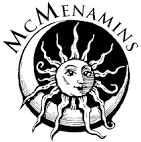
McMenamins is a family-owned chain of brewpubs, breweries, music venues, historic hotels, and theater pubs in Oregon and Washington. Many of their locations are in rehabilitated historical properties; at least nine are on the National Register of Historic Places. According to the Brewers Association, McMenamins is one of the top 50 largest craft breweries in the United States.

The Kennedy School, originally the John D. Kennedy Elementary School, is a former elementary school that has been converted to a hotel, movie theater and dining establishment in northeast Portland, Oregon. The facility is operated by the McMenamins chain. The hotel has 35 guestrooms, a brewery, four bars, and a restaurant.
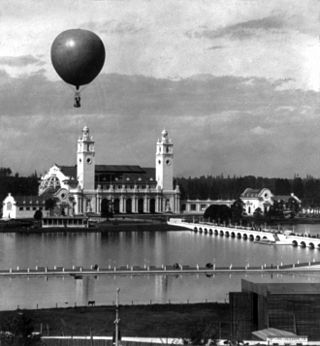
The Lewis and Clark Centennial Exposition, commonly also known as the Lewis and Clark Exposition, and officially known as the Lewis and Clark Centennial and American Pacific Exposition and Oriental Fair, was a worldwide exposition held in Portland, Oregon, United States in 1905 to celebrate the centennial of the Lewis and Clark Expedition. While not officially considered a World's Fair by the Bureau of International Expositions, it is often informally described as such; the exposition attracted both exhibits and visitors from around the world. During the exposition's four-month run, it attracted over 1.6 million visitors, and featured exhibits from 21 countries. Portland grew from 161,000 to 270,000 residents between 1905 and 1910, a spurt that has been attributed to the exposition.

St. Johns is a neighborhood of Portland, Oregon, United States, located in North Portland on the tip of the peninsula formed by the confluence of the Willamette River and the Columbia River. It was a separate, incorporated city from 1902 until 1915, when citizens of both St. Johns and Portland voted to approve its annexation to Portland, which took effect on July 8, 1915.

The Bagdad Theatre is a movie theater in the Hawthorne District of Portland, Oregon, United States. It originally opened in 1927 and was the site of the gala premiere of One Flew Over the Cuckoo's Nest in 1975, and of My Own Private Idaho in 1991.
Brian McMenamin is an American businessman in the state of Oregon. A native of the state, he and his older brother Mike McMenamin founded the McMenamins restaurant and brewpub chain in 1983. He serves as general manager and vice-president of the company which operates more than 50 locations that include music venues such as the Crystal Ballroom, movie theaters such as the Bagdad Theatre, historic buildings converted to brewpubs like the Cornelius Pass Roadhouse, and several hotels.

The Multnomah County Poor Farm is a former poor farm located in Troutdale, Oregon, United States. Established in 1911, the building and its surrounding grounds operated as a poor farm housing the ill and indigent populations in the Portland metropolitan area at the beginning of the twentieth century, after the closure of a poor farm in the city's West Hills. Over the course of the century, the farm would come to be used as a nursing home before becoming abandoned in the 1980s.
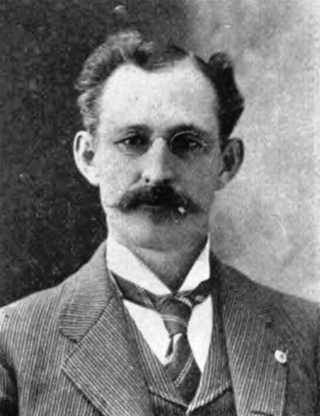
William Henry Wehrung was an American businessman and politician in the state of Oregon. A native Oregonian, he was a cabinetmaker, banker, and merchant in Hillsboro, Oregon. A member of the Democratic Party, he served in the Oregon State Senate and was a longtime member of the Hillsboro city council.
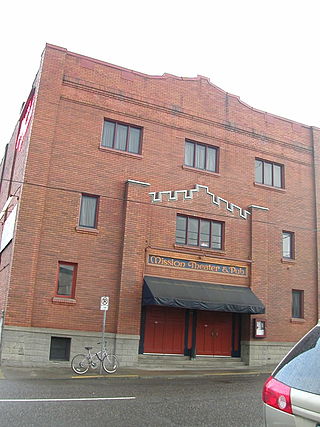
The Mission Theater and Pub is a movie theater and pub located in the northwest Portland, Oregon. Formerly a Swedish church and union hall, the theater was re-opened as a McMenamins establishment in 1987. The theater was known for featuring second-run films, until 2019 when a first-run operation was implemented, and for serving beer, wine, and food.

Povey Brothers Studio, also known as Povey Brothers Art Glass Works or Povey Bros. Glass Co., was an American producer of stained glass windows based in Portland, Oregon. The studio was active from 1888 to 1928. As the largest and best known art glass company in Oregon, it produced windows for homes, churches, and commercial buildings throughout the West. When the firm was founded in 1888, it was the only creative window firm in Portland, then a city of 42,000 residents.

The Hryszko Brothers Building is a building located at 836 North Russell Street, in the historic Albina District of north Portland, Oregon, United States. It was established in 1905 by Polish immigrants as a meeting hall and aid station, later hosting meetings by the St. Stanislaus Catholic Church and the Polish Library. It is now operated by McMenamins under the name White Eagle Saloon & Hotel, or simply White Eagle. The building is listed on the National Register of Historic Places.

The Lewis and Clark Exposition Gold dollar is a commemorative coin that was struck in 1904 and 1905 as part of the United States government's participation in the Lewis and Clark Centennial Exposition, held in the latter year in Portland, Oregon. Designed by United States Bureau of the Mint Chief Engraver Charles E. Barber, the coin did not sell well and less than a tenth of the authorized mintage of 250,000 was issued.

The Oregon Theatre, or Oregon Theater, was an adult movie theater in the Richmond neighborhood of southeast Portland, Oregon, United States. The theater was completed in 1925 and originally housed a Wurlitzer pipe organ and vaudeville stage. It would later screen Hollywood, art-house, and Spanish-language films. The building was acquired by the Maizels family in 1967 and became an adult cinema in the 1970s. It continued to operate as the city's longest running pornographic cinema and remained owned by a member of the Maizels family until 13 February 2020, when it went into foreclosure. It closed in early March 2020.
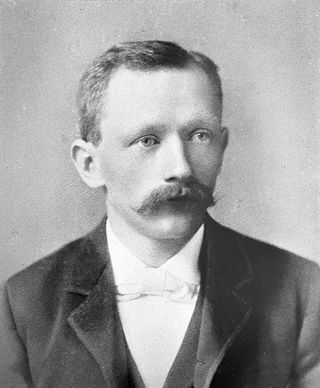
Henry John Hefty was an immigrant from Switzerland who worked as an architect based in Portland, Oregon, United States.
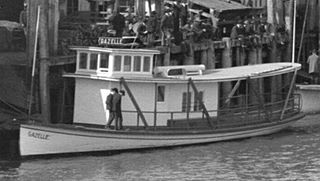
Gazelle was a gasoline powered launch that operated on the Willamette and Columbia river from 1905 to 1911. For short periods of time Gazelle was operated on the Oregon Coast, on Yaquina Bay and also as an off-shore fishing vessel, in the Coos Bay area.

At the advent of the 20th century, the city of Portland, Oregon, was among the first on the United States West Coast to embrace the advent of the silent and feature film. The city's first movie palace, the Majestic Theatre, opened in 1911. By 1916, Portland had "the finest array" of movie houses on the West Coast relative to its population, pioneering venues dedicated exclusively to screening films. The popularization of the sound film in the early 1920s resulted in another boom of new cinemas being constructed, including the Laurelhurst, the Hollywood Theatre, and the Bagdad Theatre, the latter of which was financed by Universal Pictures in 1926.

The Idaho Building at the 1905 Lewis and Clark Centennial Exposition in Portland, Oregon, was a 2-story exhibition hall designed by James A. Fennell of the Boise architectural firm Wayland & Fennell. When the Idaho Building opened, journalist Blaine Phillips wrote, "The building is sublimely beautiful, the vivid colors which have been applied in perfect harmony with the surroundings, serving ably to accentuate the picturesqueness and uniqueness of the construction."
Idaho Building may refer to:

The American Inn was the sole hotel on the grounds of the Lewis and Clark Centennial Exposition held in Portland, Oregon, in 1905. As advertised in a local newspaper, the Inn was "beautifully located on the main esplanade on the shore of Guild's Lake" and provided guests with easy access to the Exposition's many wonders. It was also touted in the paper as "A Woman's Enterprise," "a monument to the business ability of women, as it was planned and is now managed by Mrs. J. T. McCready."

Telegraph was a sternwheel-driven steamboat built in 1903 in Everett, Washington. Except for the summer of 1905, from 1903 to 1912, Telegraph served in Puget Sound, running mainly on the route from Seattle to Everett, and also from Seattle to Tacoma and Olympia, Washington.




















